Nature’s reclamation of our dismantled railway network describes a delightfully melancholy intermingling, whereby wildlife and vegetation recolonise trackbeds while structures are lost to the permeative interventions of water and tree growth. But a more malevolent force has also been at play here – that of our state-owned roads company which, by default, sees only liability in those parts of our heritage for which it was appointed custodian eight years ago.
National Highways looks after around 3,200 disused bridges, tunnels, viaducts, and culverts – comprising the Historical Railways Estate (HRE) – on behalf of their owner, the Department for Transport (DfT). The Protocol Agreement defining its management duties makes clear that it must “seek to reduce the liabilities for the Secretary of State in terms of individual structure safety”. There is no mention of delivering value-for-money or social benefit, and thereby hangs the problem.
The best-practice hierarchy of principles for the conservation of structures carrying roads – as many of National Highways’ legacy rail bridges do – is captured in the company’s standard CG 304. Wherever possible, structures should be maintained in their original form, it says; modifications should involve minimal loss in character, historic fabric, and landscape impact, while any new materials should be chosen sympathetically.
All of which goes some way to explaining the robust criticism levelled at National Highways over the past year or so for its brutalist infilling and demolition of bridges without any meaningful engineering justification or evaluation of their potential to play future sustainable transport roles. Also overlooked has been their historical and ecological significance which just feels wrong in the supposedly more enlightened uplands of the 21st century. This has all the hallmarks of the destructive 1970s.

Sacrificial lamb
At one point, a Brunel-built masonry arch near Saltash was at risk of burial under temporary development powers – known as Class Q – applicable only in the event of a serious threat of death or injury. Located between two fields, 375 metres from the nearest right of way, it carries a grassed farm track and occasional Land Rover. Its condition was fine, but that didn’t stop National Highways telling Cornwall Council that the structure presented “an ongoing and increasing risk to public safety” and infilling was necessary “to prevent an emergency arising”. Its plight was highlighted by campaigners, since when it has miraculously disappeared from National Highways’ Major Works programme. The company was guilty of a ruse.
But the real turning point came last May/June with an act of cultural vandalism in Cumbria’s Eden Valley. Great Musgrave bridge was needed for the longstanding aspiration of uniting two heritage railways, neither of which were consulted before a contractor arrived with a thousand tonnes of aggregate and concrete within which to bury the structure. Eden District Council (EDC) asked National Highways to stop its work while decisions were made about planning requirements, but National Highways refused.
The bridge was in generally good condition, with a handful of minor defects. Repointing open joints would – according to a structural assessment – have restored its 17-tonne capacity to 40 tonnes. Work was undertaken in 2012 at a cost of £10,645, but the assessment was not updated. In 2021, the responsible engineer told EDC that infilling was needed “to prevent the failure of the bridge and avert a collapse”, an outcome that was implausible and would have been unprecedented. But Class Q was invoked and the work pushed forward as an emergency. The rest is history, leaving the taxpayer £124,000 worse off and the railways’ volunteers kicked in the teeth.
Civil engineers expressed outrage and embarrassment at the reputational impact of National Highways’ actions on their profession. Judith Sykes, a Fellow of the Institution of Civil Engineers, described the infilling as “shocking” and a “sad reflection” on the state of the industry. Others were much less polite.
Hornswoggling sneaksbies
The consequence was that the Government put on hold dozens of other infilling and demolition schemes while consideration was given to whether more of these historic structures could be repurposed for walking, cycling, or rail. But ecologically damaging preparatory works continued and National Highways went ahead with the award of a £245,000 contract for an infill scheme at Barcombe in East Sussex, prompting the affected bridge – through its own Twitter account! – to brand the company’s team as “hornswogglers”. You can Google that one.
The bridge is a much-valued community asset, within the village’s conservation area and spanning an established wildlife corridor. Residents were up in arms – feeling ignored by the state giant – and uncertain as to whether Schrödinger’s infill would be inflicted or not. 176 of them signed a letter to National Highways setting out their concerns, all of which were sidestepped in the company’s response. But another – which arrived just before Christmas – brought some cheer, insisting that “we do not intend to infill this structure”. However, locals remain concerned about the company’s propensity for what they call “sleight of word”; “intend” is far from the unequivocal safeguarding they seek.

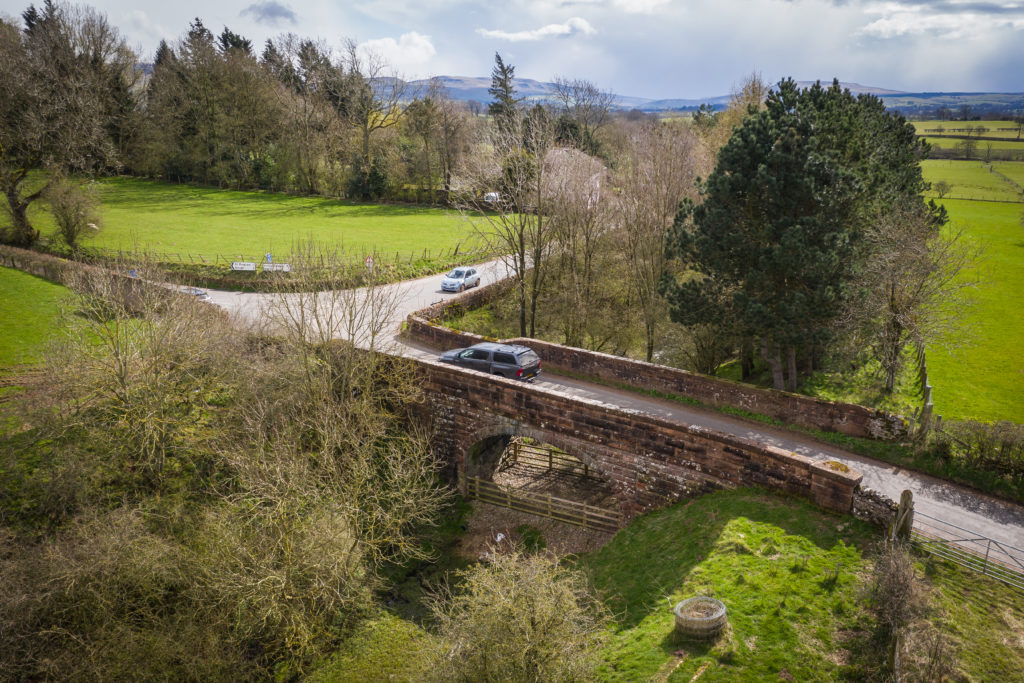
accused of vandalism
after infilling a masonry
bridge needed for a link
between two Cumbrian
heritage railways.
Turning tide
At a board meeting on 21 July 2021, National Highways’ chief executive officer acknowledged that “some aspects of the HRE work was starting to detrimentally impact the company’s reputation”. To put itself on the front foot, a Stakeholder Advisory Forum (SAF) was established comprising representatives from the DfT, Sustrans, Railway Paths, the Railway Heritage Trust, and The HRE Group – the latter being an alliance of engineers, sustainable transport advocates and greenway developers who launched a campaign against National Highways’ infilling and demolition programme last year. Your author must hereby declare a vested interest as one of its 10 members.
The SAF’s role is to provide advice to National Highways in support of the development of strategy, policy and activity around the HRE’s upkeep, including the identification of opportunities to reuse structures and advising on engagement with relevant parties. A formal review process has been established for determining the optimum approach to Major Works projects, including consideration of each structure’s value against a collection of ‘lenses’. A commitment has also been made to seek planning permission for all proposed infill schemes, rather than driving them through under Permitted Development powers which circumvent democratic process. These are positive steps in a much better direction.
Outcomes are, however, the only things that matter. The Government’s pause currently safeguards 68 structures previously earmarked for infilling or demolition. If the review process ultimately saves none of them, months of procedural effort and dialogue will have been futile. Time will soon tell as the SAF is likely to consider its first Major Works proposals from National Highways’ HRE engineering team shortly.
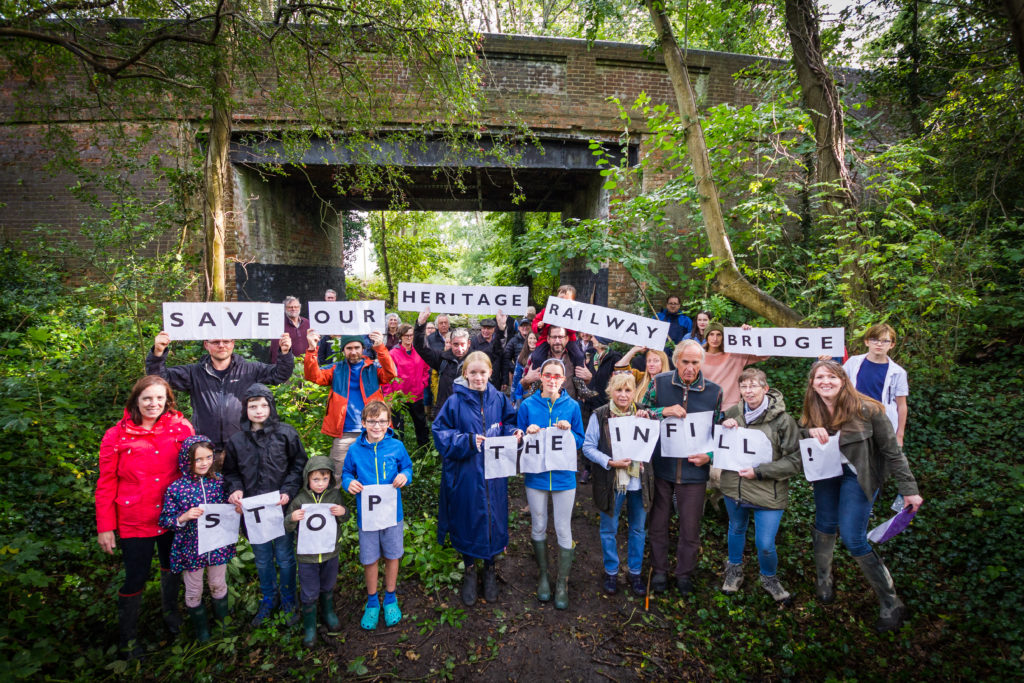
Removing the blinkers
So what are the ‘lenses’ through which the potential of these legacy structures will be viewed?
When National Highways’ destructive intentions first emerged into the open in January 2021, 134 bridges and tunnels appeared on the at-risk list, although this number has since been reduced to 68. Among them were five spanning railways advocated for reopening – two in the Lake District, one in Dorset, one in Dumfries & Galloway, and another in West Wales – while three others were needed for extensions to heritage lines in Norfolk, Angus and Cumbria. Of these, two have been reprieved (at least for the time being), two have been shunted forwards into a future works programme, one is still threatened with demolition, two have been ‘strengthened’ with corrugated steel arches (the structure gauge of which is too small to accommodate trains), while Great Musgrave was very publicly vandalised.
The picture around active travel was equally uncomfortable, with eight planned greenways prejudiced by infill schemes. This situation is untenable given the Government’s professed commitment to an active travel revolution. So, last September the DfT asked Sustrans to carry out an initial assessment of the structures still under threat and seven others where as-yet undetermined Major Works were planned, looking at their potential worth for future walking and cycling routes.
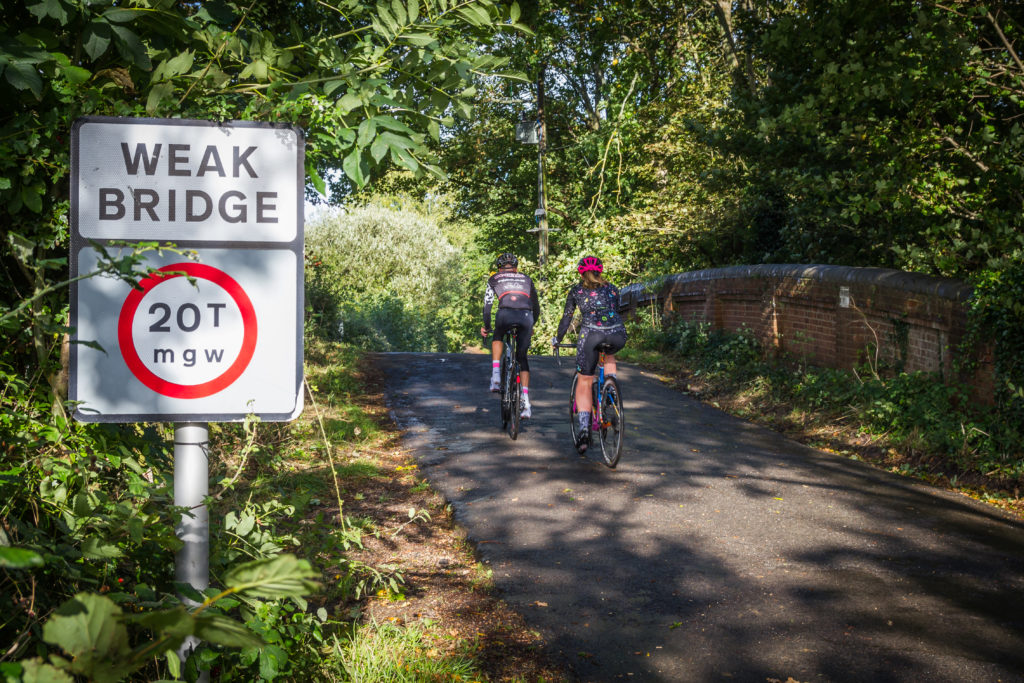
The findings, published in March, were striking, underlining the folly of condemning existing infrastructure to ruin from a position of ignorance. Twenty-six of the 75 structures were found likely to be useful as part of the ongoing development of our national or local cycle networks, 24 were deemed to have potential at a local level while not appearing in current plans, and the remaining 25 were considered to have no active travel value within the 10-year horizon of the study. Without the pause, the damage could have been significant and irreparable.
Social responsibilities
And then there are the moral obligations that come with life in the 2020s. Does it make environmental or economic sense to bury a structure in around 3,000 tonnes of aggregate and concrete- as National Highways has proposed at Little Smeaton in North Yorkshire – when it could instead be sympathetically repaired for a fraction of the cost, possibly allowing the Coal to Coast Greenway to pass beneath it at some point in the future? And is it appropriate to block established wildlife corridors – as National Highways did when it erected palisade fencing across a dismantled railway at Horspath in Oxfordshire – forcing animals onto a busy road where vehicles were involved in near misses?
A desk study by The HRE Group suggests that 67% of the currently at-risk structures span routes that wildlife could be using for foraging or migration, while 20 of the 59 in England are within or adjacent to sites on the Priority Habitat Inventory for Deciduous Woodland, nine stand in Areas of Outstanding Natural Beauty and one spans a Site of Special Scientific Interest.
The importance of ‘green bridges’ and other forms of wildlife passage have been documented repeatedly over the past 25 years. These habitats also offer unique opportunities for increased biodiversity. In this context, the liability reduction policy being blindly pursued by National Highways has demonstrated a spectacular lack of judgement.
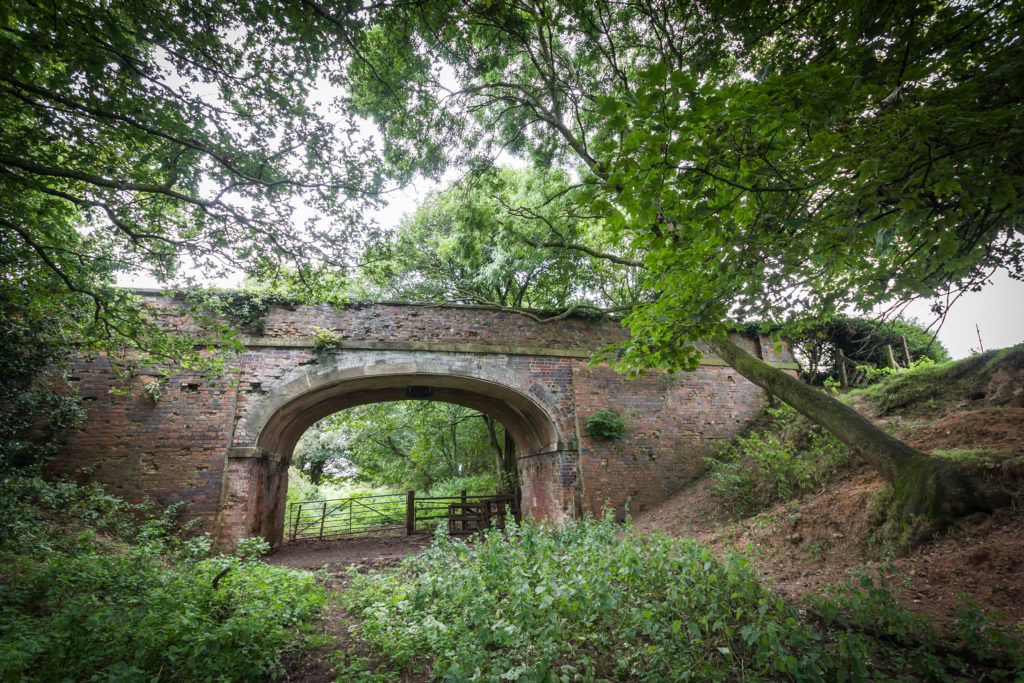

Different direction?
So where do things go from here? National Highways is looking again at its intentions for the 68 structures imperilled by infilling or demolition, reflecting its new review process and lenses; thereafter, revised proposals will be presented to the Stakeholder Advisory Forum for feedback or endorsement.
Campaigners consider it likely that the Sustrans study will reprieve a fair number, but they have little faith that the ecological and heritage value of these Victorian assets will be recognised. There is however the safety net of Ministerial approval now being required for any destructive schemes, alongside the commitment to seek planning consent.
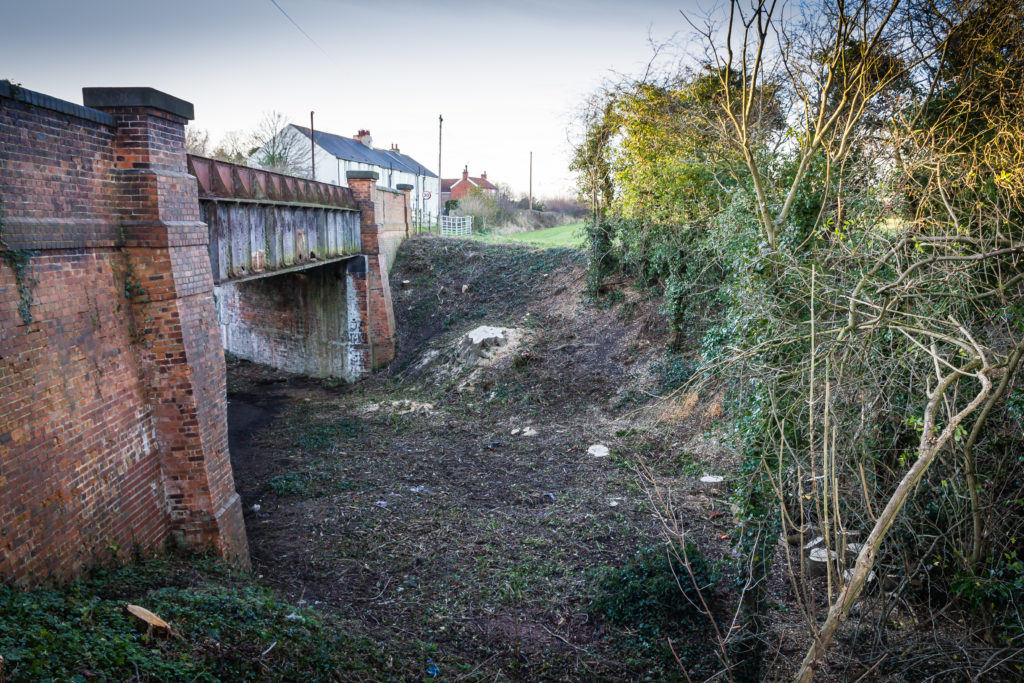
a threatened bridge at Little
Smeaton, North Yorkshire,
which spans a wildlife corridor.

The desecration of Great Musgrave bridge will be subject to belated public scrutiny when an application to retain the infill beyond the 12 months allowed under Class Q – which runs out on 23 May – is considered by Eden District Council’s planning committee. If it’s successful, the structure will forever stand as a monument to the distorted reality contrived by National Highways to justify its actions; if it’s not, the company has threatened to appeal to the Secretary of State, rather than accept the outcome of democratic process and remove the infill material.
The past year has exposed the underhand manner in which National Highways has put our historic infrastructure beyond use without a thought for its strategic or social value. In doing so, it has trampled community aspirations and been less than straight with the truth. Political pressure is forcing a change of approach; there’ll be an audit trail, accountability, and input from those with a vested interest. That’s how it should always have been.
But the survival of these historic structures ought never to have been in doubt; by default, they should have been regarded as assets and managed accordingly. The world is changing and we need to derive maximum value from what we already have.
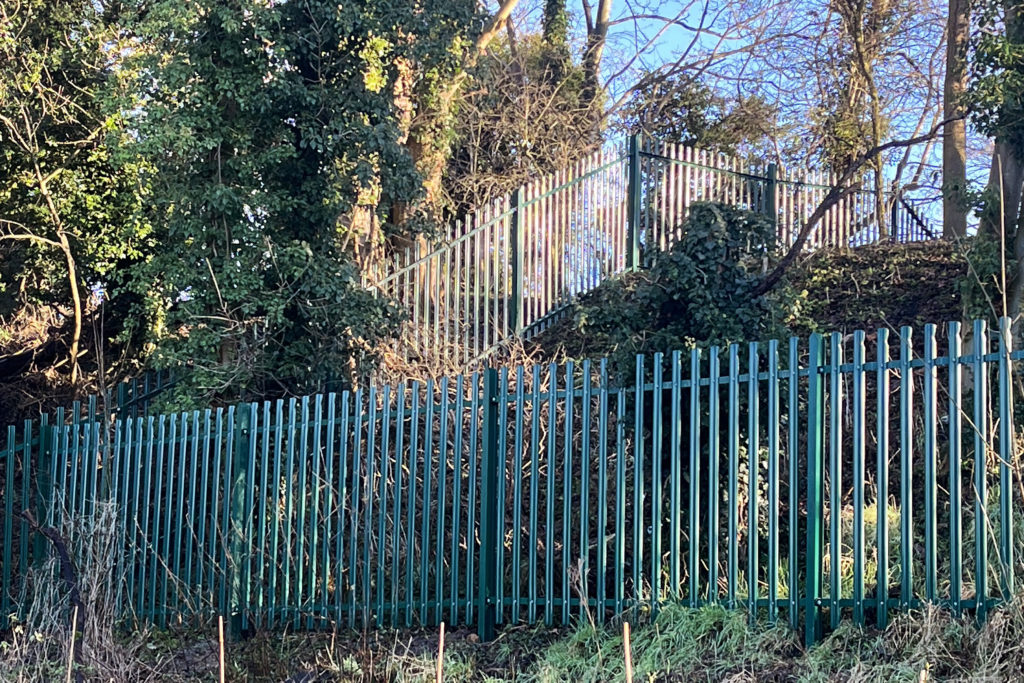
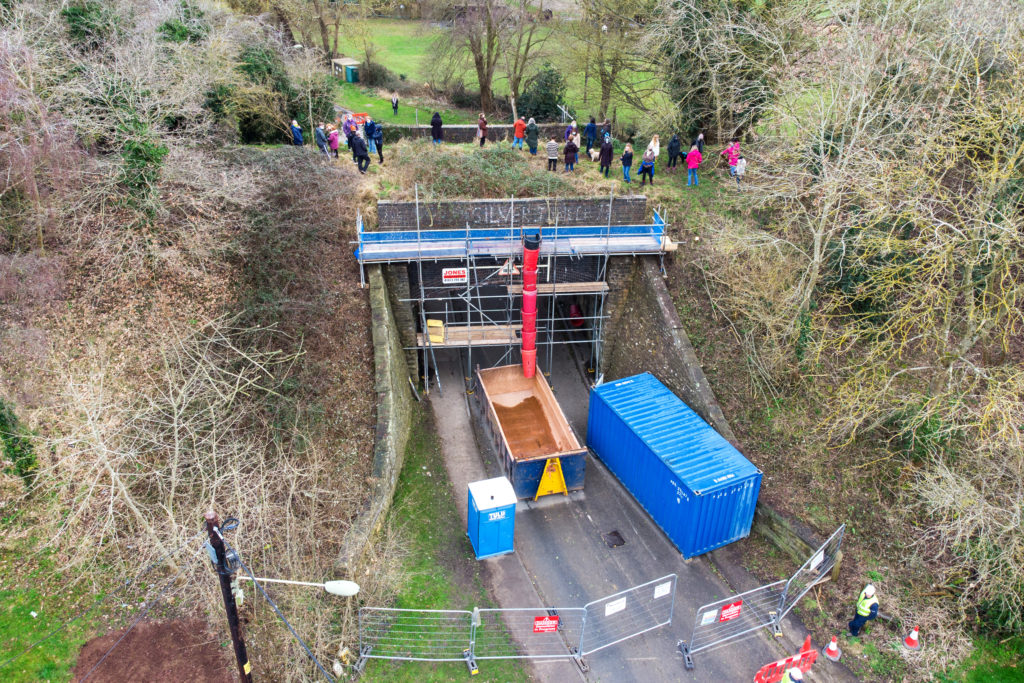
because its demolition would have severed a wildlife
corridor. Having reprieved it, National Highways then
blocked the corridor with palisade fencing.
All photo credits: HRE Group

